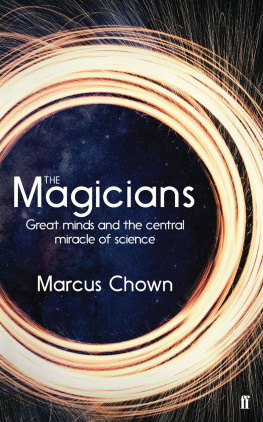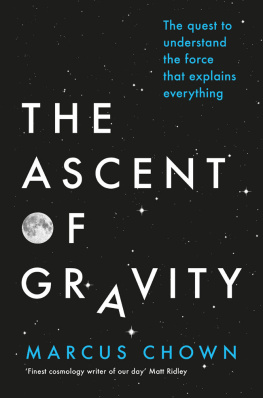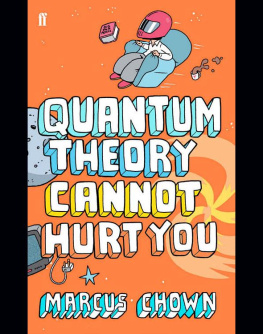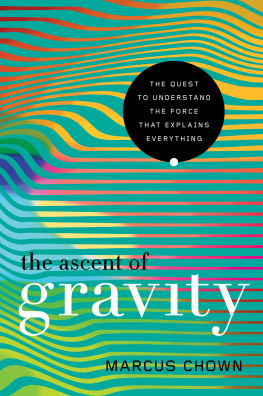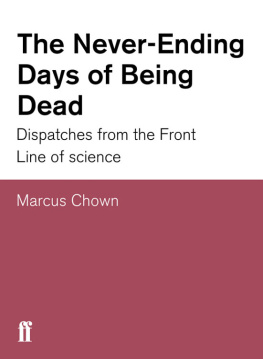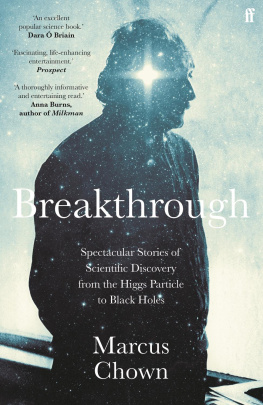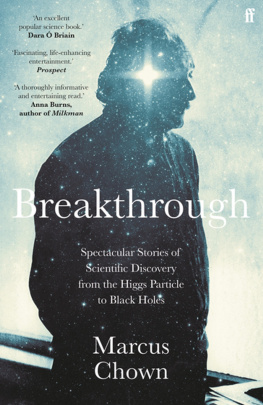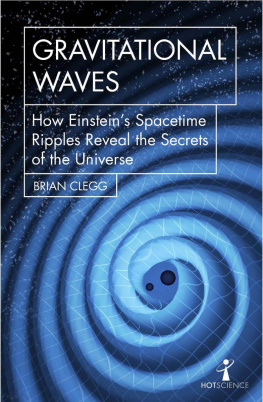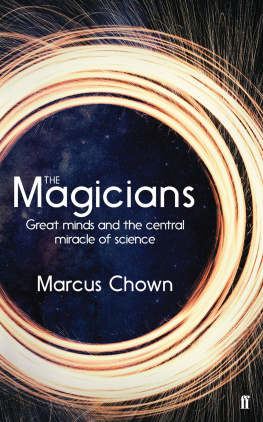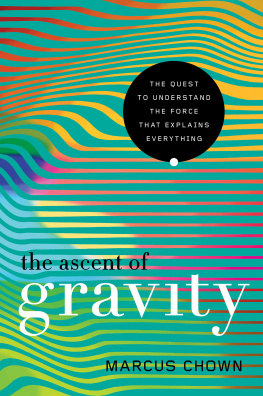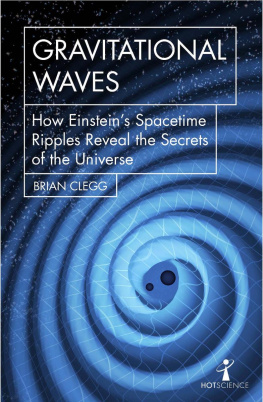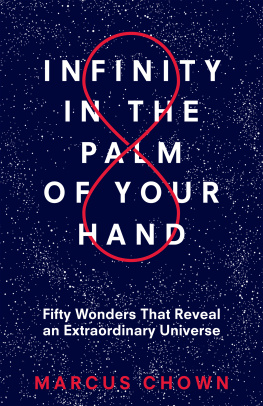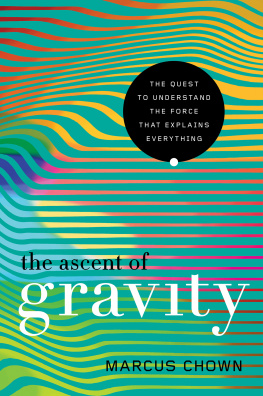There are two kinds of geniuses: the ordinary and the magicians. An ordinary genius is a fellow whom you and I would be just as good as, if we were only many times better. There is no mystery as to how his mind works. Once we understand what theyve done, we feel certain that we, too, could have done it. It is different with the magicians. Even after we understand what they have done it is completely dark.
The universe is full of magical things patiently waiting for our wits to grow sharper.
EDEN PHILLPOTTS
Nothing is too wonderful to be true.
MICHAEL FARADAY
About 3.6 million years ago, three hominins walked across a volcanic landscape and left footprints in the recently fallen ash. The impressions of those footprints, which are visible today at Laetoli in Tanzania, are intensely evocative. As the biologist Richard Dawkins remarked, Who does not wonder what these individuals were to each other, whether they held hands or even talked, and what forgotten errand they shared in a Pliocene dawn?
We will, of course, never know the answers to these questions, but we can hazard a guess at some of the things the three hominins, probably Australopithecus afarensis, saw and wondered about on that distant day, long before the dawn of our own species. Much of the natural world is chaotic and unpredictable, but some things are regular and reliable: the rising and setting of the Sun; the march of the seasons; the changing phases of the Moon; the gradual drift of star patterns across the night sky. Such natural rhythms would almost certainly have left a deep impression on even our earliest ancestors.
There was no progress made in understanding these rhythms for tens of thousands of centuries after the footprints at Laetoli were made. Everything changed, however, with a critical invention in the Middle East around 3000 bc: writing provided the means to record events in the sky and to recognise ever more subtle patterns in the movement of the heavenly bodies. In Babylon in modern-day Iraq, it became possible to predict astronomical spectacles such as eclipses of the Moon and the Sun. And those who made such predictions and controlled the dissemination of such information were able to strike awe in the minds of the population. Even if they were not tempted to pass themselves off as gods, they gained immense power over the masses.
That power, however, was nothing compared with the power of science. Science, which was born in the seventeenth century, found the ultimate reason for the worlds patterns the general laws that underpin the rhythms of nature. And those laws are portable. So, although Isaac Newton famously deduced his law of gravity from the fall of an apple and the motion of the Moon around the Earth, he was also able to apply it in another, entirely different domain to explain why there are two tides in the oceans every twenty-five hours.
Recognising a pattern in, for instance, eclipses permitted only the prediction of future eclipses. But science, by exploiting general-purpose laws, could predict the existence of phenomena that nobody had ever suspected. The first, and most striking, example of this was the prediction of an unknown planet by Urbain Le Verrier. When Neptune was found in 1846 within a whisker of where in the night sky the French astronomers calculations revealed it should be it created an international sensation and made Le Verrier a superstar. Science has made gods of men, the French biologist Jean Rostand would later write.
The discovery of Neptune was a dramatic demonstration of the central magic of science: its ability to predict the existence of things previously undreamt of which, when people went out and looked for them, turned out to actually exist in the real universe. This ability is so magical that even the exponents of science can often scarcely believe it. Famously, Albert Einstein did not believe two predictions of his own theory of gravity: black holes and the Big Bang. And when it came to a third prediction gravitational waves he vacillated, predicting their existence in 1916 and unpredicting them a year later, before predicting them again in 1936. They would eventually be discovered on 14 September 2015.
The central magic of science appears miraculous because nobody knows why it works. The predictions made by physicists arise from mathematical formulae, or equations, which are found to describe aspects of the universe. But nobody knows why such equations so perfectly describe the physical world or, to paraphrase the twentieth-century Austrian physicist Eugene Wigner, why mathematics is unreasonably effective in the natural sciences. Put simply, the universe has a mathematical twin that can be written on a piece of paper or scrawled across a whiteboard. But why it has such a twin is a huge mystery.
The importance of the central magic of science is that it is at the crux of why physics works. Physicists naturally want to understand why the principal tool they use in their working lives is so effective, and understanding why it works will conceivably tell us something very profound about our universe and why it is constructed the way it is.
In this book I will tell the stories of some of the people who have demonstrated the central magic of science. One striking thing is the difference in their approaches. The Scot James Clerk Maxwell was arguably the greatest physicist between Newton and Einstein. His thought processes were essentially like those of a normal human being, though of course a souped-up version; in his mind, he concocted mechanical models of phenomena such as electricity and magnetism using everyday objects like cogs and wheels. Only when he was satisfied that he had captured the essence of reality did he express his model in mathematical terms. In the case of electricity and magnetism, this yielded his famous equations of electromagnetism, which revealed that light is an electromagnetic wave and predicted the existence of radio waves, making possible the ultra-connected world of the twenty-first century. The approach of the English physicist Paul Dirac, however, was very different: the hyper-literal Mr Spock of physics simply plucked the formula which describes an electron travelling at close to the speed of light out of thin air. The Dirac equation, which predicted a hitherto unsuspected universe of antimatter and is one of only two equations inscribed on the stone floor of Westminster Abbey, was the result of Dirac playing with equations on a piece of paper and insisting on mathematical consistency.
The stories I tell here of Maxwell, Dirac and many others who demonstrated the central magic of science are as factual as I can make them. If the scientists are alive and it was possible to interview them, I did so; for those that are dead, I used the facts at my disposal and dramatised the events around them. For instance, my description of the day that Maxwell came to the stunning realisation that light is a wave of electricity and magnetism is pieced together from the available facts. On his return from a summer holiday at his Glenlair estate in Scotland, he did indeed go to the library at Londons Kings College to look in a reference book for the measured values of the permittivity and permeability of air, which had been obtained by Wilhelm Weber and Rudolf Kohlrausch. He did walk or catch the horse-drawn bus from his home in Kensington to the Strand and back each day, a route that took him along Piccadilly and past the Albemarle Street turn-off to the Royal Institution, where he would sometimes stop. And he and his wife did ride regularly in Hyde Park and Kensington Gardens, Katherines pony Charlie having been brought down to London by train from Glenlair.

